
08 Mar 10 Must-see Buildings in Budapest
Are you going to visit Budapest for the first time, and you want to be sure that you are not going to miss any main site? Here’s the list for you.
While we certainly recommend going off the beaten path, exploring as many hidden gems as you can find, there are at least 10 buildings you should not miss in Budapest.
Dohány Street Synagogue
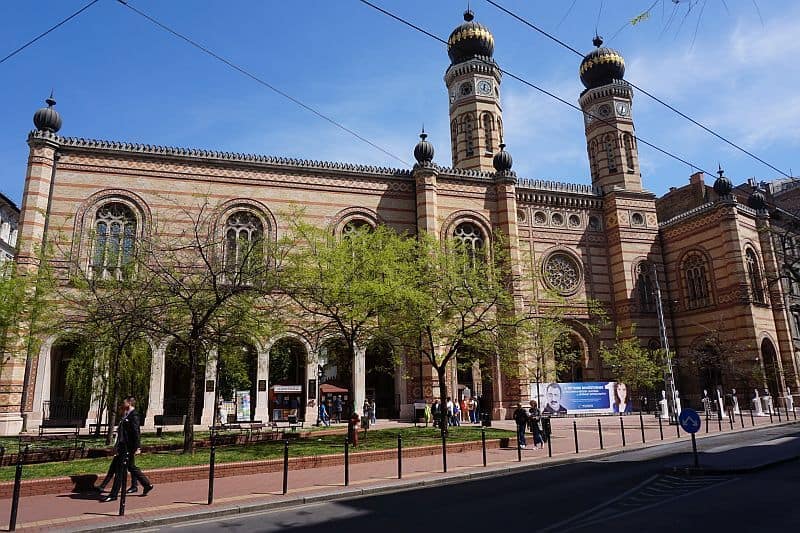
Photo: wikipedia.hu
Did you know that the largest Synagogue in Europe is in Budapest? The Dohány Street Synagogue was built in 1854-1859, creating a unique architectural blend of neo-Moorish, folkloristic Hungarian, and Jewish styles.
Also known as the Great or Main Synagogue, this symbol of Jewish culture in Budapest is structured like a Christian church, including a large organ that makes it an ideal location for concerts.
A visit to the interiors also gives the opportunity to explore the temple’s gardens. In the area dedicated to Raoul Wallenberg, the Swedish diplomat who saved thousands of Jews during the 1940s, stands the Tree of Life, a moving memorial dedicated to the victims of the Holocaust, whose names are written on the leaves of a weeping willow.
Location
Opera House
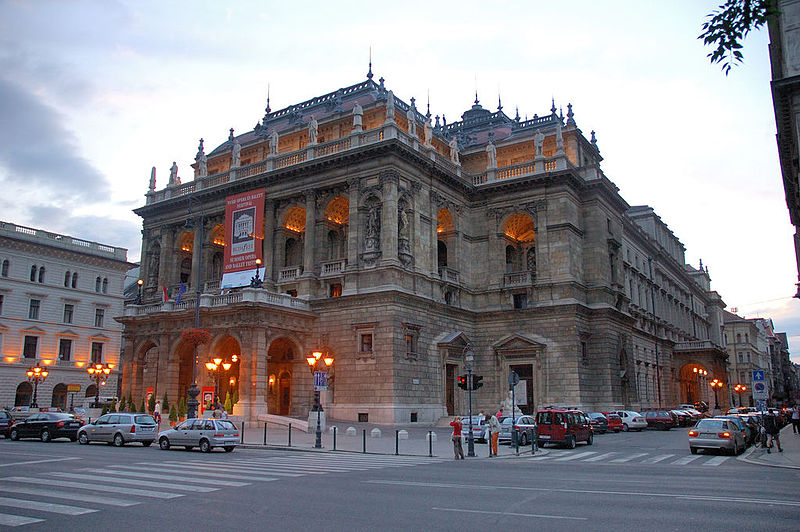
Photo: en.wikipedia.org
Fresh out of an extensive renovation (2017-2022), Budapest’s Opera House is a triumph of Neo-Renaissance, designed by Miklós Ybl, one of the most renowned Hungarian architects.
The building is so richly decorated that, according to a well-spread legend, when he first saw it, Emperor Franz Joseph was very disappointed. He allowed Hungarians to build their own Opera on the condition that it would be smaller than the Royal Opera House in Vienna.
And if the Hungarians kept the promise about the size, the problem was that they made it “more beautiful”, which was hard to swallow, in a time when Budapest was trying to affirm itself as the new imperial city in Europe.
The outside features Carrara marble statues of European musicians such as Mozart, Verdi, and Beethoven, while the interiors echo Italian Renaissance buildings, and were used as a set for many international films, such as Evita, Spy, and Inferno.
Location
Parisian Passage

Photo: mellowmoodhotels.com
Budapest’s spring happened at the beginning of 1900, after the unification of Buda, with Pest, and Óbuda. In those exciting years, one complex obtained the reputation of “The most elegant building in Pest”: it was the seat of the Inner City Bank, as well as a pompous commercial gallery.
Damaged during World War II, and utilized by the main travel agency during the Communist era, the Parisian Passage was renewed completely in recent times (2016-2019).
It reopened as a luxury hotel, surrounded by stores, and made accessible to the citizens of Budapest with a Cafè, and a restaurant. Its facade is decorated with mosaics, gothic elements, and ceramic busts protruding outside the building. The interior is an example of Orientalism, with a breathtaking dome showered by natural sunlight, and an incredible amount of details to discover.
Location
Matthias Church
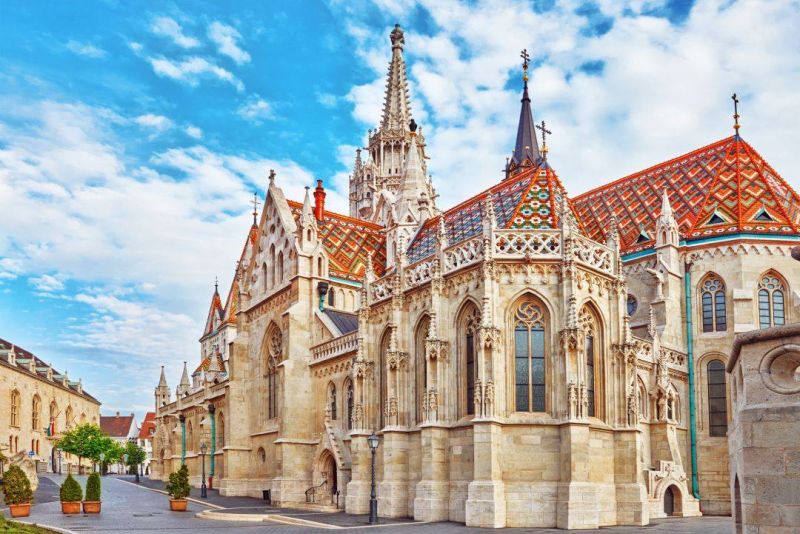
Photo: shutterstock.com
A colorful roof covered with ceramic tiles is only a hint of how unique Matthias Church is. Its interiors never fail to mesmerize visitors from all over the world, looking different from any other church, and more similar to those of a Medieval mansion.
This Gothic Church in the Buda Castle district has a tormented history, and at least 2 other names, the official one being the Church of Our Lady. Also known as the Coronation Church, it dates back to 1246.
Built on the site of a 1015’s church destroyed during the Tatars’ invasion, it was greatly expanded in the 15th century, during the kingdom of King Matthias.
Converted into a Mosque during the Turkish occupation (16th century), it was completely restyled during the Austro-Hungarian empire, by local architect Frigyes Schulek, who also built the surrounding decoration: the famous Fisherman’s Bastions.
Location
Hungarian Parliament Building
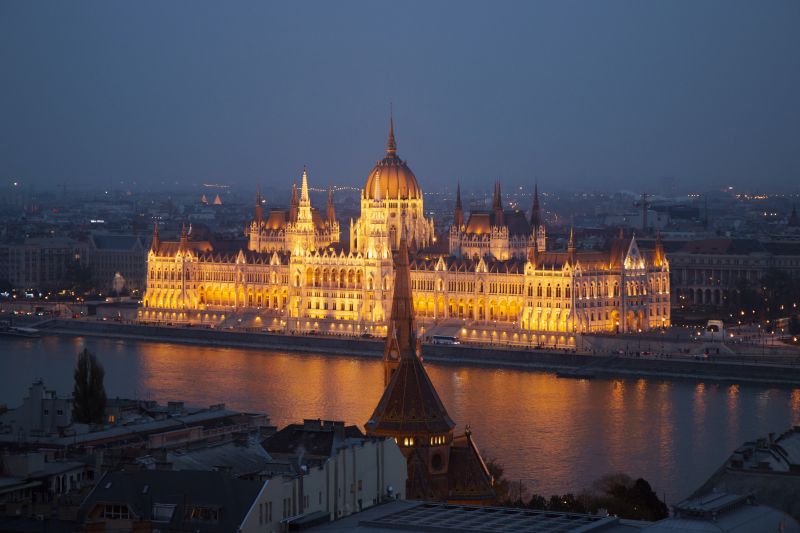
Photo: shutterstock.com
Inaugurated in 1902 as the biggest parliament in the world, Budapest’s Parliament imposes itself covering about 200 meters of the Pest’s riverbank. The Neo-Gothic exteriors are made special by a 96 meters tall dome inspired by a Viennese church.
Inside it’s a masterpiece of Neo-Baroque, preserving precious objects such as the Royal Crown of Stephen, Hungary’s first king. The interiors can be visited by purchasing an online ticket.
With more than 600 rooms, Budapest’s Parliament is nowadays “only” the third-largest House of Parliament, surpassed by those of Buenos Aires, and Bucharest.
Location
Central Market Hall
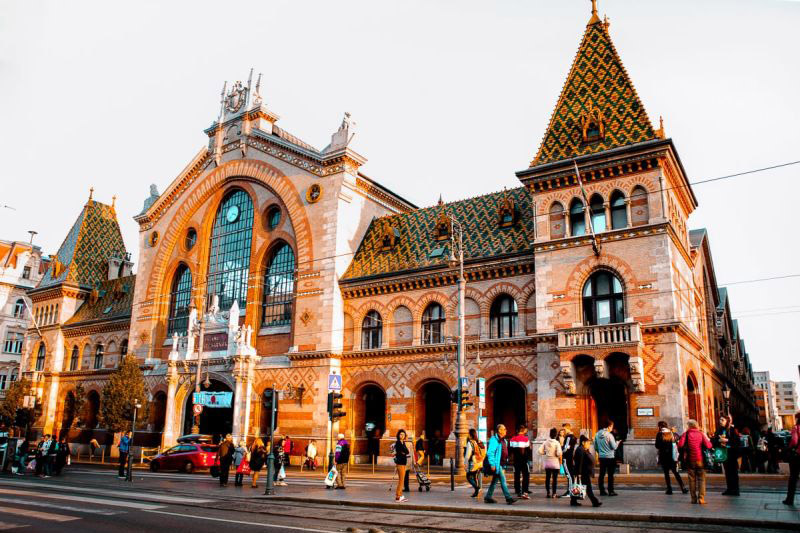
Photo: hellojetlag.com
At the end of the 19th century, to replace outdoor markets, and gain better control of the quality of the food sold, Hungarians built 5 indoor markets in Budapest: they all still exist, at least structurally.
The Great Market Hall, or Central Market, is the biggest in town, with its 3 storeys, inaugurated in 1897. Its ample structure resembles a train station, also because of the continuous bustle of people that animated it from 6 in the morning and for the rest of the day.
The Central Market is the ideal spot to dig into the secrets of Hungarian traditional cuisines; fresh ingredients are sold in family-owned stalls, from paprika to duck fat, and mangalica, while fresh Hungarian strudel with cottage cheese or apples (rétes) can be a filling snack before hitting the streets again.
Location
St. Stephen’s Basilica
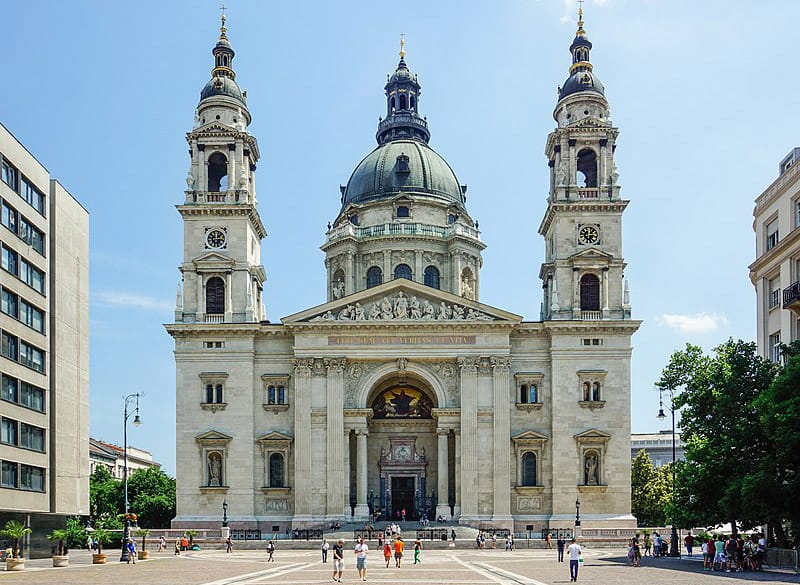
Photo: wikimedia.org
Budapest’s largest church is named after the first king of Hungary, Stephen, crowned in the year 1000. Stephen converted the kingdom to Christianity, and his right hand is the main relic of the basilica.
The church was built between 1851, and 1905, requiring 3 generations of architects including Ybl, the same who designed the Opera House. The construction works were made longer by an accident that occurred in 1868, when the cupola collapsed, destroying almost everything that had been built.
Together with the Parliament, this is the tallest building in Central Budapest, with its 96 meters symbolizing the equality of power between the Church and the State. In the crypts, important personalities are buried: among them, Ferenc Puskás, the hero of Hungarian soccer in the 1950s.
Location
Postal Savings Bank

Photo: hu.wikipedia.org
Hidden behind one of the largest squares in town, the former Postal Savings Bank is one of the purest examples of Hungarian Art Nouveau. His designer was the father of the movement, Ödön Lechner, also known as the Hungarian Gaudì.
The building was commissioned to him, but he did not satisfy the authorities. With his effort to create a facade that would speak the language of forms of the local peasants, ideal customers of the bank, Lechner was said to have undervalued the kingdom. Luckily the sort of this building changed, and nowadays the Hungarian state is proud to have it as the seat of its Treasury.
To admire the rooftop covered in Zsolnay ceramic it’s necessary to check the building from a distance, and possibly from a taller location, such as the Basilica’s dome.
The mosaics decorating the entire building are inspired by Hungarian folk patterns, and the pyro granite statues on the top are symbols referring to wealth and gathering.
Location
Bálna
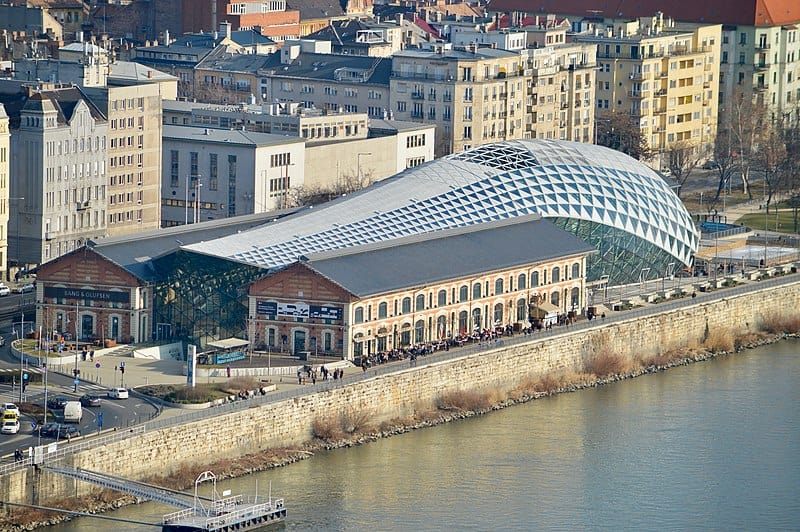
Photo: wikimedia.org
A giant glasshouse watching the river Danube catches the attention when going to Pest from the Liberty Bridge. Known as “CET” from cetacean, or as “bálna”, whale, the building was conceived as a shopping mall, as an ideal continuation of the Main Market Hall.
Designed by a Dutch architect, it’s an example of non-standard architecture, it looks a bit like a spaceship, and it creates very bright spaces, as well as a pleasant outside. In its first years of existence, the Bálna did not have the expected success as a shopping area but became a popular hangout with the pubs, and the restaurants surrounding it.
Moreover, Bálna made it to the big screen multiple times, becoming one of the locations of “The Martians” with Matt Damon, appearing in “Spy” with Melissa Mc Carthy, and chosen by National Geographic for “Mars”.
Location
The House of Music
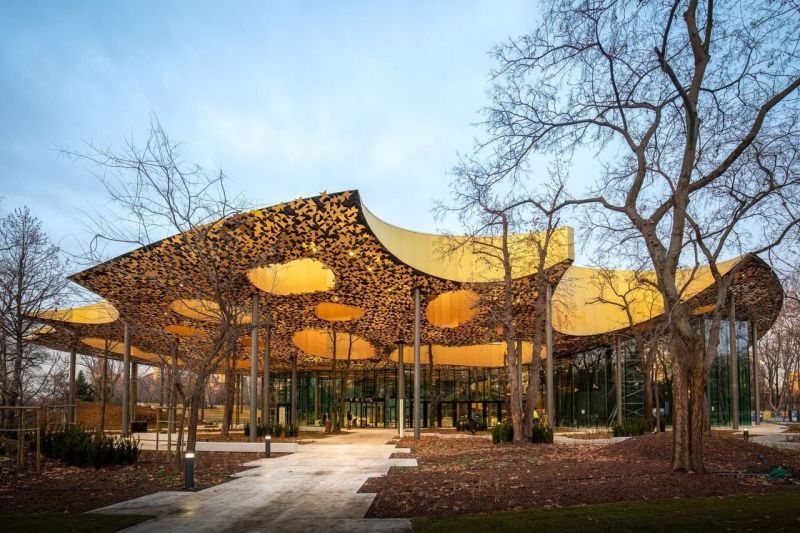
Photo: dailynewshungary.com
In 2022 Budapest welcomed a new building, a cultural space dedicated to music, and designed by Japanese architect Sou Fujimoto. The project is part of the requalification of the City Park (Városliget), and it’s meant to integrate with trees and nature.
Using 94 heat-insulated glass panels, the architect created a special facade, translucent, allowing light to reach the bottom level of the building. The yellow-colored porch creates a special experience for visitors walking in. With a focus on the history of Hungarian music from 1953 to 1993, the House of Music includes concert venues, an open-air stage, and exhibition spaces.
Location


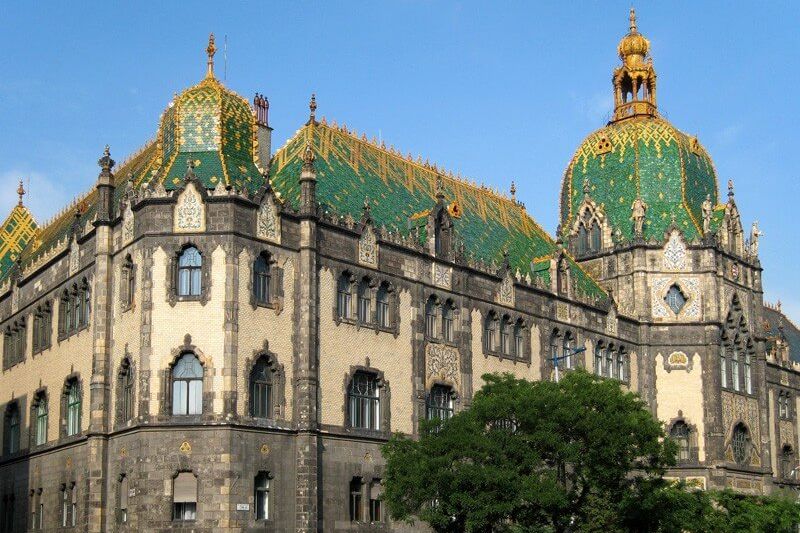
Sorry, the comment form is closed at this time.